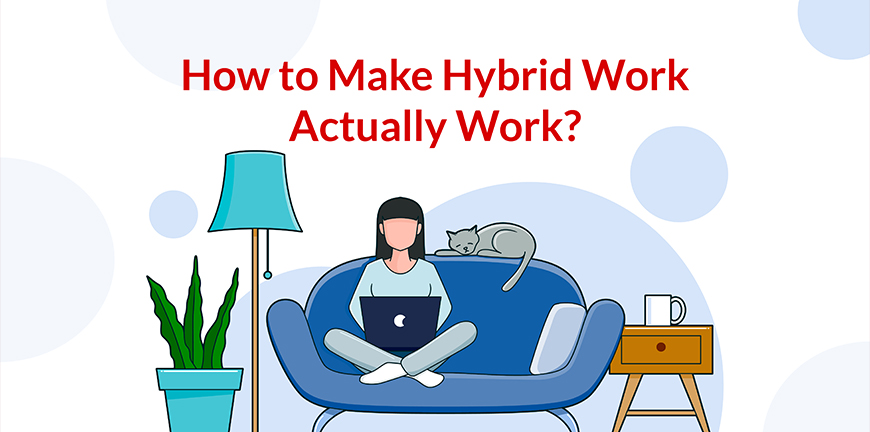
How Hiring External Leadership Talent Can Benefit Your Company?
17/02/2023
How to Make Hybrid Work Actually Work?
25/02/2023Introduction
Do you ever feel like you have so much left to do but have so little time to do it? Are you often distracted although you start each day with a plan to get so much done? Do you find yourself wondering how can you get yourself back on track? There is no one-size-fits-all solution to increase work productivity. But there are a few productivity techniques that you can adapt in your workday to see a difference.
Making simple adjustments to your work schedule can work wonders in boosting your productivity. Here are some of the major lifestyle adjustments that need to be put in place.
1. Habit transformation
Try to start by implementing small changes to your habits to assess what’s working and what’s not.
2. Manage your time
To be more productive, you need to keep track of the time spent on activities and whether or not they are generating the desired results.
3. Be accountable
Being accountable for a set of tasks helps increase your productivity. It pushes you out of your comfort zone and keeps you on track.
Alp Consulting put up a public poll recently, to try to get a picture of people’s perspectives on what factors they consider most important to achieve workplace goals. Out of around 500 respondents, close to half of them chose consistency as the most important work attribute, followed by commitment and patience.
10 Tips to improve workplace productivity
Here are some super easy tips to follow for better productivity at work.
1. Avoid multitasking
Juggling multiple tasks makes you feel productive and gives you a false sense that you can get most of your work done in a shorter time. But this rarely produces good results. Instead, focus on one task at a time. This not only drives you to work faster but also helps to achieve better results.
2. Set reasonable goals
Try to set manageable goals, meaning, set smaller goals that are achievable. Completing these smaller goals gives you a sense of achievement and confidence leading to better productivity the next time around.
3. Take a break
Regular breaks can help release mental blocks and decrease stress. Most workplaces ensure employees take breaks. Take the time to step away, relax, and return with new motivation and creative ideas.
4. The 5-minute rule
If you are big on procrastination, try the five-minute rule. Make sure that you spend less than 5 minutes on an outstanding task. More often than not, even after 5 minutes, the urge to continue remains. Even if you move on to another productive task, remember that those small tasks that you completed in 5 minutes account for your productivity.
5. Use time blocks
Time blocking is a well-known effective strategy to improve your productivity. Dedicating a block of time to a certain task helps in getting more work done. Time blocks are usually divided into 60 or 90-minute sections.
6. Limit distractions
It’s normal to get distracted from work. Focusing on a single task until it’s done mostly doesn’t happen, even if you’re pressing for time. What you can do is switch off your notifications, or even switch off your phone if there is no immediate emergency that you are aware of.
7. Get to the toughest part of work first
It’s tempting to avoid difficult tasks or time-consuming tasks. But, taking on the harder parts of your work first can set you on a much-needed stream of motivation and focus for the rest of the day. Prioritize working on the hardest part first thing when your workday begins.
8. Set boundaries
Often, employees take up work that is not part of their schedule and which is beyond the scope of their role. While this isn’t necessarily wrong, if it’s coming in the way of your crucial, tasks, then you need to consider delegating it to your other team members who work along the same lines.
9. Identify your peak productivity hour
Everyone is different, and so are their productivity hours and work cycles. While some employees put in their best work during the morning hours, some hit their productive stride post-lunch or late in the evening. Identify your productive hours and work on your most pressing work tasks at those peak times to increase your productivity.
10. Keep going
Even after you incorporate all the productivity tips, there is one crucial thing that you must follow. Keep going. Consistency is key to achieving any goal. Adhering to your plan and continuing through challenges leads to accomplished goals, even when you face challenges.
If you experience a slump in your usual productivity, lack of motivation might be the culprit. Rekindle your drive by reflecting on why you truly do your work.
Focus on trying one of two of these productivity tips at a time to make it possible to develop skills in this area, reducing stress and maximizing our professional and personal goals.




